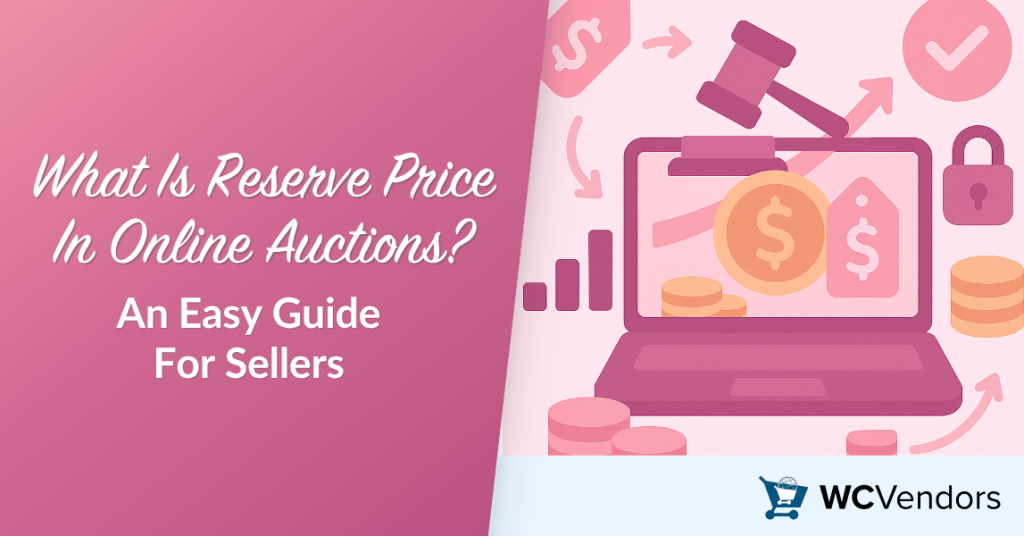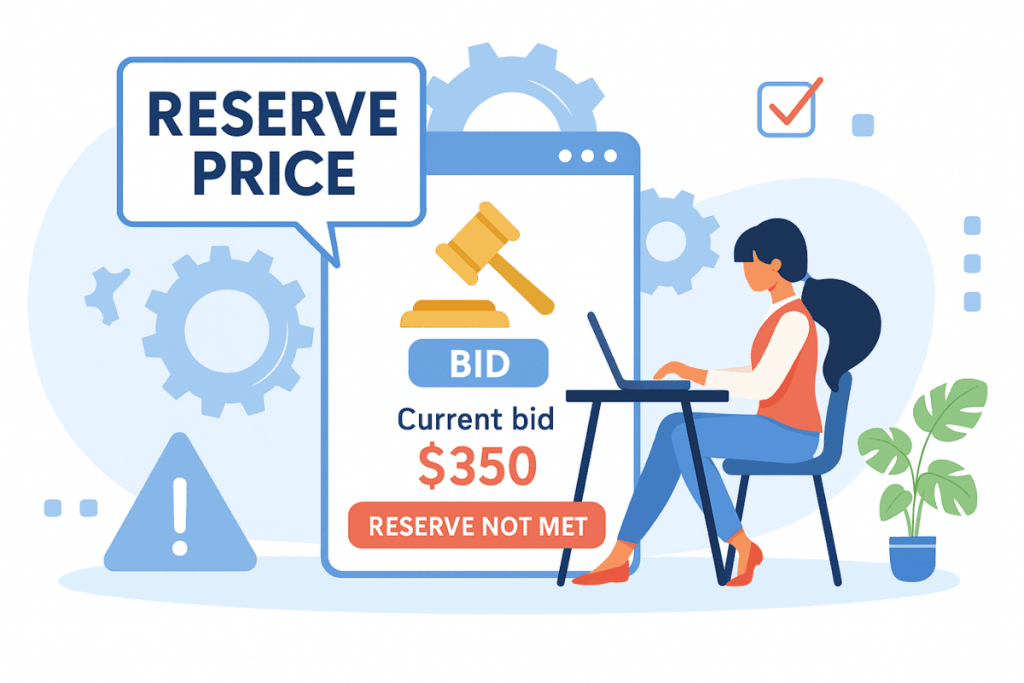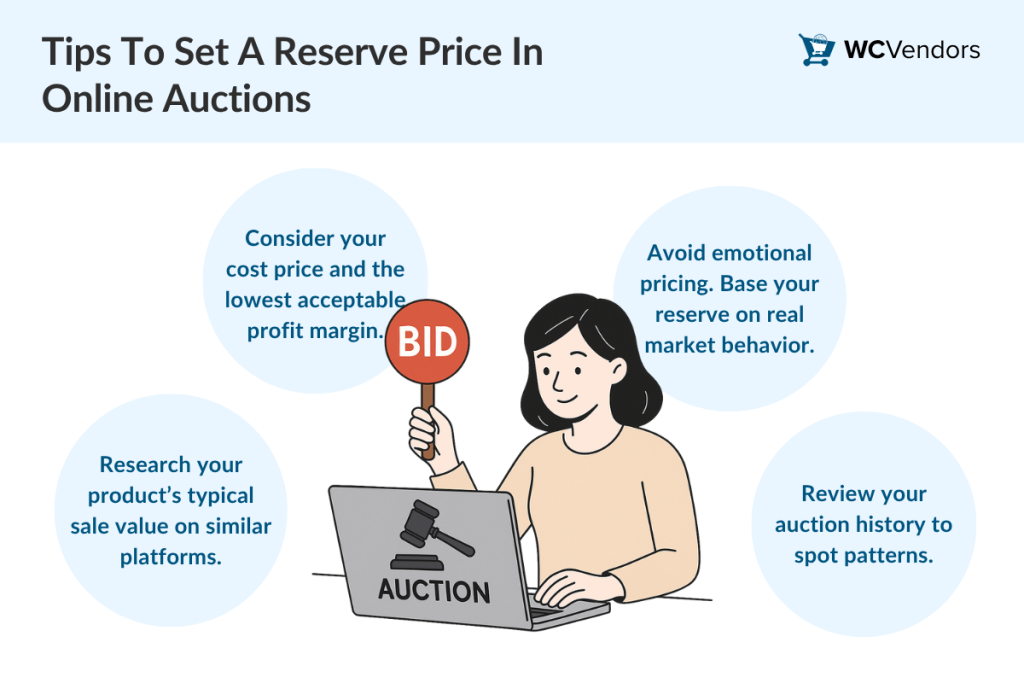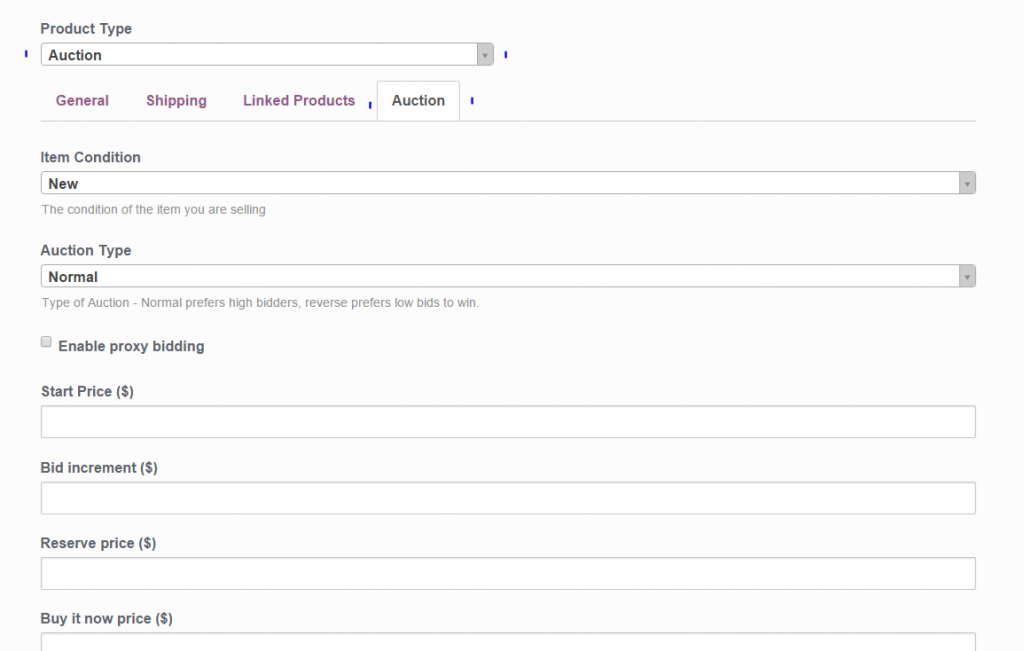
Setting the right prices in an online auction can directly affect whether an item sells or not. One pricing tool sellers often rely on is the reserve price. So, what is reserve price in an auction? This article explains how it works in the auction process, especially for those using a WooCommerce multi-vendor store.
From understanding the purpose of a reserve to knowing how it shapes buyer behavior, we’ll explore how this pricing strategy protects your bottom line. We’ll also show how to set a reserve price using the WooCommerce Simple Auctions plugin together with WC Vendors.
Let’s start by answering the question: what is reserve price, and how can it benefit sellers.
Understanding Reserve Price
A reserve price is the minimum amount a seller is willing to accept in an auction. If bidding doesn’t reach this amount, the item isn’t sold.
This is different from the starting bid, which simply sets the opening price for bidders. While a low starting bid encourages early interest, the reserve price makes sure the seller doesn’t lose money.

In WooCommerce Auctions, a reserve not met outcome means the highest bid didn’t meet the reserve price. It helps sellers avoid underselling, especially for rare or high-value products.
Reserve pricing is also known as a reservation price, particularly in academic or economic contexts. It is especially useful in multi-vendor stores where vendors manage their own listings and want control over pricing limits.
Knowing what is reserve price also helps store owners explain the auction rules clearly to their customers.
Why Do Sellers Use A Reserve Price?
Sellers use reserve pricing to avoid selling an item below its value. This helps when:
- You’re selling collectibles, electronics, or premium items.
- The market for the product fluctuates.
- You want to test interest but don’t want to risk underselling.
It also supports your brand’s pricing standards. If you’re selling through a WooCommerce marketplace, this prevents your vendors from devaluing their products unintentionally.
In some cases, having a reserve can increase bidding tension. But it can also backfire if the reserve is set too high. That’s why it’s important to set a reserve price that reflects real market demand.
Reserve pricing also complements broader inventory and pricing strategies. For example, if you’re running a large WooCommerce store, you might be managing hundreds of products across vendors. That’s where proper marketplace inventory management becomes essential.
Auction Reserve VS No-Reserve Auctions

There are two main types of auctions: those with a reserve and no-reserve auctions.
A no-reserve auction allows the item to sell regardless of the final bid. This encourages higher bidder participation but comes with greater risk for the seller.
By contrast, an auction reserve gives you more control. It ensures that your item only sells when bids meet a pre-set limit. This is ideal when you want to maintain pricing integrity.
As a seller, choosing the right type of auction depends on your goals. If you’re launching a new marketplace or clearing out older inventory, no-reserve listings may drive engagement. If you want to protect product margins, reserve pricing is more reliable.
Reserve pricing can also work well alongside other pricing strategies. For example, when combined with a seasonal pricing strategy, it lets vendors adjust reserve levels depending on seasonal trends.
To fully understand auction strategies, it’s important to revisit what is reserve price and how it contrasts with no-reserve auctions.
How Reserve Prices Affect Auction Outcomes
Reserve pricing influences both bidder behavior and the auction process itself.
Buyers are more cautious if they suspect a high reserve price. Some may hesitate to bid at all if they think the price is the minimum the seller will accept.
On the other hand, a realistic reserve can motivate bidding if it feels achievable. The key is balance. Avoid setting the minimum price too high unless you’re prepared to risk no sale.
If you’re running a WooCommerce multi-vendor marketplace, educate your vendors about how reserve prices work. Vendors who understand how to set a reserve effectively are more likely to succeed in auctions.
Clarifying what is reserve price also makes it easier for vendors to set expectations with bidders.
Tips To Set A Reserve Price

Use these tips to determine your reserve:
- Research your product’s typical sale value on similar platforms.
- Consider your cost price and the lowest acceptable profit margin.
- Avoid emotional pricing—base your reserve on real market behavior.
- Review your auction history to spot patterns.
If you’re selling frequently, use analytics from your WooCommerce auction plugin to identify performance trends. Basically, this helps you avoid setting a reserve that deters buyers.
Sellers who know what is reserve price and use that knowledge wisely tend to get better auction outcomes.
A good rule: Set your reserve price just below your product’s average market value. That way, buyers feel like they’re getting a deal, and you still protect your minimum.
How To Set Reserve Prices With WC Vendors + WooCommerce Simple Auctions
Running auctions on your marketplace? If you’re using the WooCommerce Simple Auctions extension with WC Vendors, setting a reserve price is simple.

From the vendor dashboard:
- Choose to sell an item via auction.
- Add your product details and select “Auction” as the product type.
- Enter the starting bid and your reserve price.
- Set the auction duration and publish.
This is fully supported by WC Vendors Pro. You can even limit auction creation to selected vendors or specific categories.
Need help picking products to auction? Check out our list of auction item ideas for inspiration.
If you’re just starting to build an auction website, our tutorial walks you through the full setup.
And if you need help picking products to auction, check out our list of auction item ideas for inspiration.
Conclusion
Using a reserve price is a smart way to control outcomes when selling through online auctions.
It gives sellers confidence, helps prevent losses, and supports pricing consistency across your marketplace.
To recap, here’s what you need to consider when using reserve pricing:
- Understanding Reserve Price
- Why Sellers Use Reserve Pricing
- Reserve vs No-Reserve Auctions
- Effects on Auction Outcomes
- Tips to Set It Right
- How to Use Reserve Pricing with WC Vendors
Ready to get started? View our pricing or try the live demo to see how reserve pricing fits into your auction setup.


